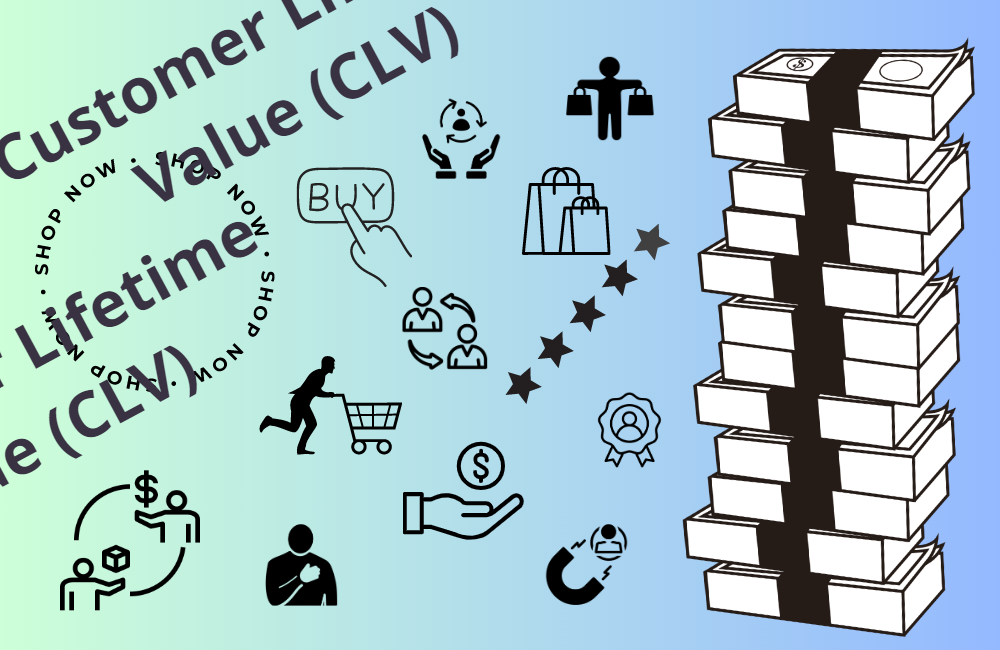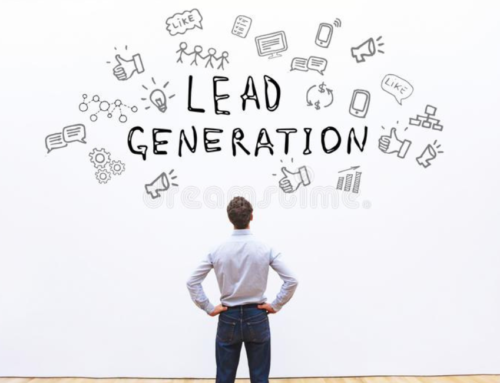A Complete Guide to Calculating, Improving, and Leveraging CLV for Business Growth
Have you ever thought about how much money you spend at your favorite store or restaurant?
Every time you visit your favorite store or restaurant and make a purchase, you may not realize it, but you are essentially investing in that company’s success. The greater number of times you visit and make purchases, the more valuable you become to the business.
As a loyal customer, you are more likely to recommend the store or restaurant to your friends and family, which can drive new business and contribute even further to the company’s bottom line.
This is why businesses need to understand the value of their customer base and use metrics like CLV to measure it.
Customer lifetime value is a fancy way of saying how much a company thinks you will spend there over your whole lifetime. It’s like the company is guessing how much they will make from you, and they want to make sure you keep coming back so they can make more money from you in the long run.
In a business context, the responsibility for customer lifetime value is usually shared among various departments and individuals, as it’s a key performance indicator that impacts the overall success of the company.
However, the ultimate accountability for customer lifetime value usually lies with the executive leadership team, including the CEO, CFO, and CMO, as they are responsible for setting the company’s strategic direction and ensuring that resources are allocated appropriately to achieve key business goals, including increasing customer lifetime value.
Additionally, specific teams like sales, marketing, and customer success may also have a role in managing and improving customer lifetime value.
How is Customer Lifetime Value (CLV) calculated?
The CLV is an important metric for businesses as it helps them to understand the long-term value of their customer base.
To calculate the CLV, you need to follow these steps:
- Determine the average purchase value (APV): This is the average amount of money a customer spends on each purchase. For example, let’s say that a customer spends $100 on each purchase, on average.
- Calculate the purchase frequency (PF): This is the average number of purchases a customer makes in a given period. For example, let’s say that a customer makes 4 purchases per year.
- Calculate the customer lifespan (CL): This is the average length of time a customer continues to purchase from your business. For example, let’s say that the average customer lifespan is 5 years.
Calculate the CLV: The formula for calculating the CLV is: APV x PF x CL. Using the numbers from our example, the CLV would be:
$100 (APV) x 4 (PF) x 5 (CL) = $2,000
So, in this example, the CLV for a customer would be $2,000. This means that on average, this customer will spend $2,000 on your products or services during their lifetime as a customer.
It’s important to note that the CLV calculation can be more complex and involve additional factors, such as customer acquisition costs and customer retention rates. However, the basic calculation described above provides a good starting point for understanding the concept of CLV.
The next question on your mind would be How do we ascertain Customer Lifespan (CL)?
The customer lifespan is an important factor in calculating the customer lifetime value (CLV), as it represents the average length of time a customer continues to purchase from your business.
To ascertain the customer lifespan, you can follow these steps:
- Determine the time / period you want to analyze: This could be a year, two years, or any other period you choose.
- Identify a cohort of customers: A cohort is a group of customers who made their first purchase within the period you are analyzing. For example, if you are analyzing a year, you might choose all the customers who made their first purchase during that year.
- Track their purchases over time: Record each subsequent purchase made by each customer in your cohort and track the length of time between their first purchase and their final purchase.
- Calculate the average customer lifespan: Add up the lengths of time between each customer’s first purchase and final purchase and divide by the total number of customers in your cohort.
Let’s say a clothing brand called ABC is analyzing the customer lifespan of a cohort of customers who made their first purchase in 2020. ABC has identified a cohort of 1,000 customers who made their first purchase during 2020.
ABC tracks the purchases of these customers over the next 5 years (from 2020 to 2025) and finds that the average length of time between the first purchase and the final purchase is 3 years.
This means that, on average, customers who made their first purchase in 2020 continued to make purchases from ABC for 3 years.
Based on this data, ABC can use the CLV formula to estimate the potential value of this customer cohort.
Let’s say the average purchase value (APV) for this cohort is $100, and the purchase frequency (PF) is 2 purchases per year. Using the formula:
CLV = APV x PF x CL
CLV = $100 x 2 x 3
CLV = $600
This means that, on average, each customer from this cohort is worth $600 in potential revenue to ABC over their lifetime as a customer.
With this information, ABC can make strategic decisions about customer acquisition and retention efforts, such as investing in marketing campaigns to attract new customers or developing a loyalty program to encourage repeat purchases and extend the customer lifespan.
Tools to calculate CLV
There are several tools that can be used to calculate CLV, both paid and free. To begin with start leveraging Excel. CLV can be calculated using a simple formula in Excel, making it a low-cost option for small businesses.
Google Sheets also offer a range of functions and formulae that can be used to calculate CLV.
There are Customer Relationship Management (CRM) software’s such as Salesforce, HubSpot, and Zoho, that include CLV calculations as a standard feature.
Five steps that a business can take to improve customer lifetime value:
Provide a positive customer experience: One of the best ways to improve customer lifetime value is by providing a positive experience at every touchpoint. This includes everything from the initial sale to post-sale support and follow-up. By making customers feel valued and appreciated, they’re more likely to stick around and become repeat customers.
Offer personalized and relevant products/services: Tailoring products and services to each customer’s specific needs and preferences can go a long way in improving customer lifetime value. By offering personalized recommendations and relevant promotions, businesses can increase customer loyalty and repeat business.
Implement a loyalty program: A loyalty program can be a powerful tool for improving customer lifetime value. By rewarding customers for their loyalty with discounts, free products/services, or other perks, businesses can incentivize customers to keep coming back and increase their overall lifetime value.
Continuously communicate and engage with customers: Staying in touch with customers on a regular basis is essential to improving customer lifetime value. This can include regular newsletters, social media engagement, and other forms of communication to keep customers informed and engaged with the brand.
Focus on customer retention: Retaining existing customers is often more cost-effective than acquiring new ones. By focusing on customer retention through strategies like proactive customer support, customer feedback and satisfaction monitoring, and personalized communication, businesses can improve customer lifetime value and build a loyal customer base.
Amazon X CLV
Amazon has built its entire business model around maximizing customer lifetime value by offering a wide range of products and services, as well as a seamless and convenient shopping experience. Here are some of the steps that Amazon has taken to achieve its target customer lifetime value:
Personalized product recommendations: Amazon’s recommendation engine is one of the most sophisticated in the world, using machine learning algorithms to analyze customer behavior and offer personalized product recommendations. This not only makes the shopping experience more convenient for customers but also increases the likelihood of repeat purchases.
Amazon Prime: Amazon’s subscription service, Amazon Prime, offers a range of benefits such as free shipping, access to streaming services, and exclusive deals. By incentivizing customers to sign up for Prime, Amazon is able to increase customer loyalty and lifetime value.
Customer service: Amazon places a high importance on customer service and has built a reputation for providing exceptional support. This includes fast and efficient shipping, easy returns, and 24/7 customer support. By making it easy for customers to shop and providing a seamless support experience, Amazon is able to build trust and loyalty with its customers.
Customer feedback and ratings: Amazon allows customers to leave feedback and ratings for products they have purchased, which can be used to improve the overall shopping experience. By listening to customer feedback and making changes based on their suggestions, Amazon is able to improve customer satisfaction and increase lifetime value.
Cross-selling and upselling: Amazon’s platform is designed to encourage customers to purchase related or complementary products, which can increase the average order value and overall lifetime value. For example, when a customer buys a book, Amazon may recommend other books by the same author or in the same genre.
Overall, Amazon’s focus on customer lifetime value has helped it become one of the most successful and valuable companies in the world, with a loyal customer base and strong brand reputation.
Marketing can play a crucial role in creating customer lifetime value by building brand awareness, attracting new customers, and fostering loyalty and repeat business.
Here are some ways in which marketing can help create customer lifetime value:
Building brand awareness: By creating effective marketing campaigns that showcase a brand’s unique value proposition, marketing can help raise awareness and attract new customers. This can help to increase the customer base, which is a critical component of customer lifetime value.
Targeted marketing: By using customer data and analytics to create targeted marketing campaigns, marketers can reach the right customers with the right message at the right time. This can help to improve conversion rates and increase the lifetime value of customers by encouraging repeat business.
Customer retention: Marketing can play a crucial role in customer retention by creating personalized communication and engagement strategies. This can include loyalty programs, personalized recommendations, and other forms of communication that help to keep customers engaged and satisfied with the brand.
Upselling and cross-selling: By creating targeted marketing campaigns that highlight complementary products or services, marketers can encourage customers to make additional purchases, thereby increasing the lifetime value of each customer.
Monitoring customer satisfaction: By monitoring customer feedback and satisfaction levels, marketers can identify areas for improvement and make changes to improve the overall customer experience. This can help to improve customer retention and increase lifetime value over time.
Overall, marketing can be a powerful tool for creating customer lifetime value by building brand awareness, attracting new customers, and fostering loyalty and repeat business through targeted communication and engagement strategies.







Leave A Comment